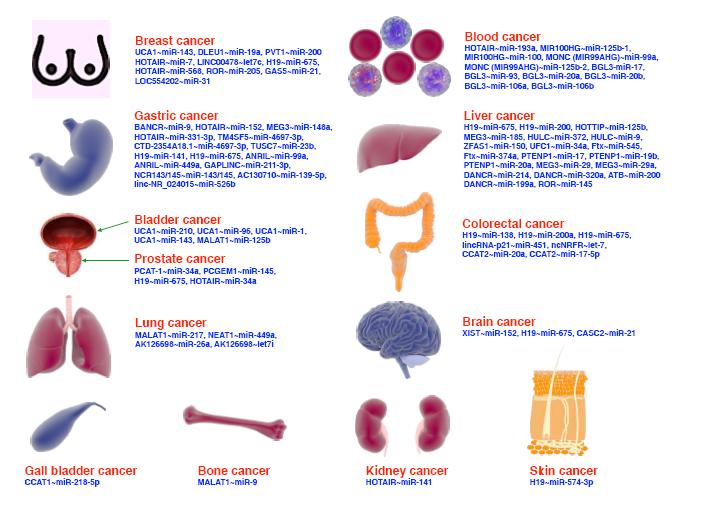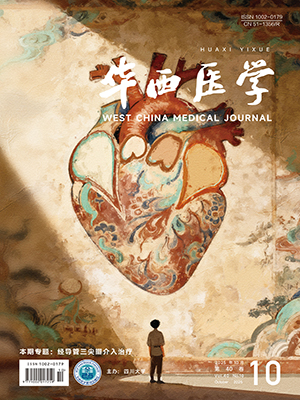| 1. |
Whittaker JL, Truong LK, Dhiman K, et al. Osteoarthritis year in review 2020: rehabilitation and outcomes. Osteoarthritis Cartilage, 2021, 29(2): 190-207.
|
| 2. |
Li D, Li S, Chen Q, et al. The prevalence of symptomatic knee osteoarthritis in relation to age, sex, area, region, and body mass index in China: a systematic review and meta-analysis. Front Med (Lausanne), 2020, 7: 304.
|
| 3. |
Hunter DJ, Bierma-Zeinstra S. Osteoarthritis. Lancet, 2019, 393(10182): 1745-1759.
|
| 4. |
Xie F, Kovic B, Jin X, et al. Economic and humanistic burden of osteoarthritis: a systematic review of large sample studies. Pharmacoeconomics, 2016, 34(11): 1087-1100.
|
| 5. |
Kolasinski SL, Neogi T, Hochberg MC, et al. 2019 American College of Rheumatology/Arthritis Foundation guideline for the management of osteoarthritis of the hand, hip, and knee. Arthritis Care Res (Hoboken), 2020, 72(2): 149-162.
|
| 6. |
Bruyère O, Honvo G, Veronese N, et al. An updated algorithm recommendation for the management of knee osteoarthritis from the European Society for Clinical and Economic Aspects of Osteoporosis, Osteoarthritis and Musculoskeletal Diseases (ESCEO). Semin Arthritis Rheum, 2019, 49(3): 337-350.
|
| 7. |
Bannuru RR, Osani MC, Vaysbrot EE, et al. OARSI guidelines for the non-surgical management of knee, hip, and polyarticular osteoarthritis. Osteoarthritis Cartilage, 2019, 27(11): 1578-1589.
|
| 8. |
Lo GH, Richard MJ, McAlindon TE, et al. Strength training is associated with less knee osteoarthritis: data from the osteoarthritis initiative. Arthritis Rheumatol, 2024, 76(3): 377-383.
|
| 9. |
Kus G, Yeldan I. Strengthening the quadriceps femoris muscle versus other knee training programs for the treatment of knee osteoarthritis. Rheumatol Int, 2019, 39(2): 203-218.
|
| 10. |
Dobson F, Bennell KL, French SD, et al. Barriers and facilitators to exercise participation in people with hip and/or knee osteoarthritis: synthesis of the literature using behavior change theory. Am J Phys Med Rehabil, 2016, 95(5): 372-389.
|
| 11. |
Dias JF, Oliveira VC, Borges PRT, et al. Effectiveness of exercises by telerehabilitation on pain, physical function and quality of life in people with physical disabilities: a systematic review of randomised controlled trials with GRADE recommendations. Br J Sports Med, 2021, 55(3): 155-162.
|
| 12. |
Wang Y, Lombard C, Hussain SM, et al. Effect of a low-intensity, self-management lifestyle intervention on knee pain in community-based young to middle-aged rural women: a cluster randomised controlled trial. Arthritis Res Ther, 2018, 20(1): 74.
|
| 13. |
Xie SH, Wang Q, Wang LQ, et al. Effect of internet-based rehabilitation programs on improvement of pain and physical function in patients with knee osteoarthritis: systematic review and meta-analysis of randomized controlled trials. J Med Internet Res, 2021, 23(1): e21542.
|
| 14. |
Gohir SA, Eek F, Kelly A, et al. Effectiveness of internet-based exercises aimed at treating knee osteoarthritis: the iBEAT-OA randomized clinical trial. JAMA Netw Open, 2021, 4(2): e210012.
|
| 15. |
Allen KD, Woolson S, Hoenig HM, et al. Stepped exercise program for patients with knee osteoarthritis: a randomized controlled trial. Ann Intern Med, 2021, 174(3): 298-307.
|
| 16. |
中华医学会骨科学分会关节外科学组, 中国医师协会骨科医师分会骨关节炎学组, 国家老年疾病临床医学研究中心(湘雅医院), 等. 中国骨关节炎诊疗指南(2021 年版). 中华骨科杂志, 2021, 41(18): 1291-1314.
|
| 17. |
Kellgren JH, Lawrence JS. Radiological assessment of osteo-arthrosis. Ann Rheum Dis, 1957, 16(4): 494-502.
|
| 18. |
Borg GA. Psychophysical bases of perceived exertion. Med Sci Sports Exerc, 1982, 14(5): 377-381.
|
| 19. |
Lim BW, Hinman RS, Wrigley TV, et al. Does knee malalignment mediate the effects of quadriceps strengthening on knee adduction moment, pain, and function in medial knee osteoarthritis? A randomized controlled trial. Arthritis Rheum, 2008, 59(7): 943-951.
|
| 20. |
Farrar JT, Young JP, LaMoreaux L, et al. Clinical importance of changes in chronic pain intensity measured on an 11-point numerical pain rating scale. Pain, 2001, 94(2): 149-158.
|
| 21. |
Ware JJ, Sherbourne CD. The MOS 36-item short-form health survey (SF-36). I. Conceptual framework and item selection. Med Care, 1992, 30(6): 473-483.
|
| 22. |
Salaffi F, Carotti M, Grassi W. Health-related quality of life in patients with hip or knee osteoarthritis: comparison of generic and disease-specific instruments. Clin Rheumatol, 2005, 24(1): 29-37.
|
| 23. |
Chen H, Zheng X, Huang H, et al. The effects of a home-based exercise intervention on elderly patients with knee osteoarthritis: a quasi-experimental study. BMC Musculoskelet Disord, 2019, 20(1): 160.
|
| 24. |
Mangione KK, McCully K, Gloviak A, et al. The effects of high-intensity and low-intensity cycle ergometry in older adults with knee osteoarthritis. J Gerontol A Biol Sci Med Sci, 1999, 54(4): M184-M190.
|
| 25. |
Brosseau L, Taki J, Desjardins B, et al. The Ottawa panel clinical practice guidelines for the management of knee osteoarthritis. Part three: aerobic exercise programs. Clin Rehabil, 2017, 31(5): 612-624.
|
| 26. |
Karasavvidis T, Hirschmann MT, Kort NP, et al. Home-based management of knee osteoarthritis during COVID-19 pandemic: literature review and evidence-based recommendations. J Exp Orthop, 2020, 7(1): 52.
|
| 27. |
Kabiri S, Halabchi F, Angoorani H, et al. Comparison of three modes of aerobic exercise combined with resistance training on the pain and function of patients with knee osteoarthritis: a randomized controlled trial. Phys Ther Sport, 2018, 32: 22-28.
|
| 28. |
Liu J, Chen L, Chen X, et al. Modulatory effects of different exercise modalities on the functional connectivity of the periaqueductal grey and ventral tegmental area in patients with knee osteoarthritis: a randomised multimodal magnetic resonance imaging study. Br J Anaesth, 2019, 123(4): 506-518.
|
| 29. |
Doi T, Akai M, Fujino K, et al. Effect of home exercise of quadriceps on knee osteoarthritis compared with nonsteroidal antiinflammatory drugs: a randomized controlled trial. Am J Phys Med Rehabil, 2008, 87(4): 258-269.
|
| 30. |
O’Reilly SC, Muir KR, Doherty M. Effectiveness of home exercise on pain and disability from osteoarthritis of the knee: a randomised controlled trial. Ann Rheum Dis, 1999, 58(1): 15-19.
|
| 31. |
Lange AK, Vanwanseele B, Fiatarone Singh MA. Strength training for treatment of osteoarthritis of the knee: a systematic review. Arthritis Rheum, 2008, 59(10): 1488-1494.
|
| 32. |
Bischoff HA, Roos EM. Effectiveness and safety of strengthening, aerobic, and coordination exercises for patients with osteoarthritis. Curr Opin Rheumatol, 2003, 15(2): 141-144.
|
| 33. |
Thomas KS, Muir KR, Doherty M, et al. Home based exercise programme for knee pain and knee osteoarthritis: randomised controlled trial. BMJ, 2002, 325(7367): 752.
|




